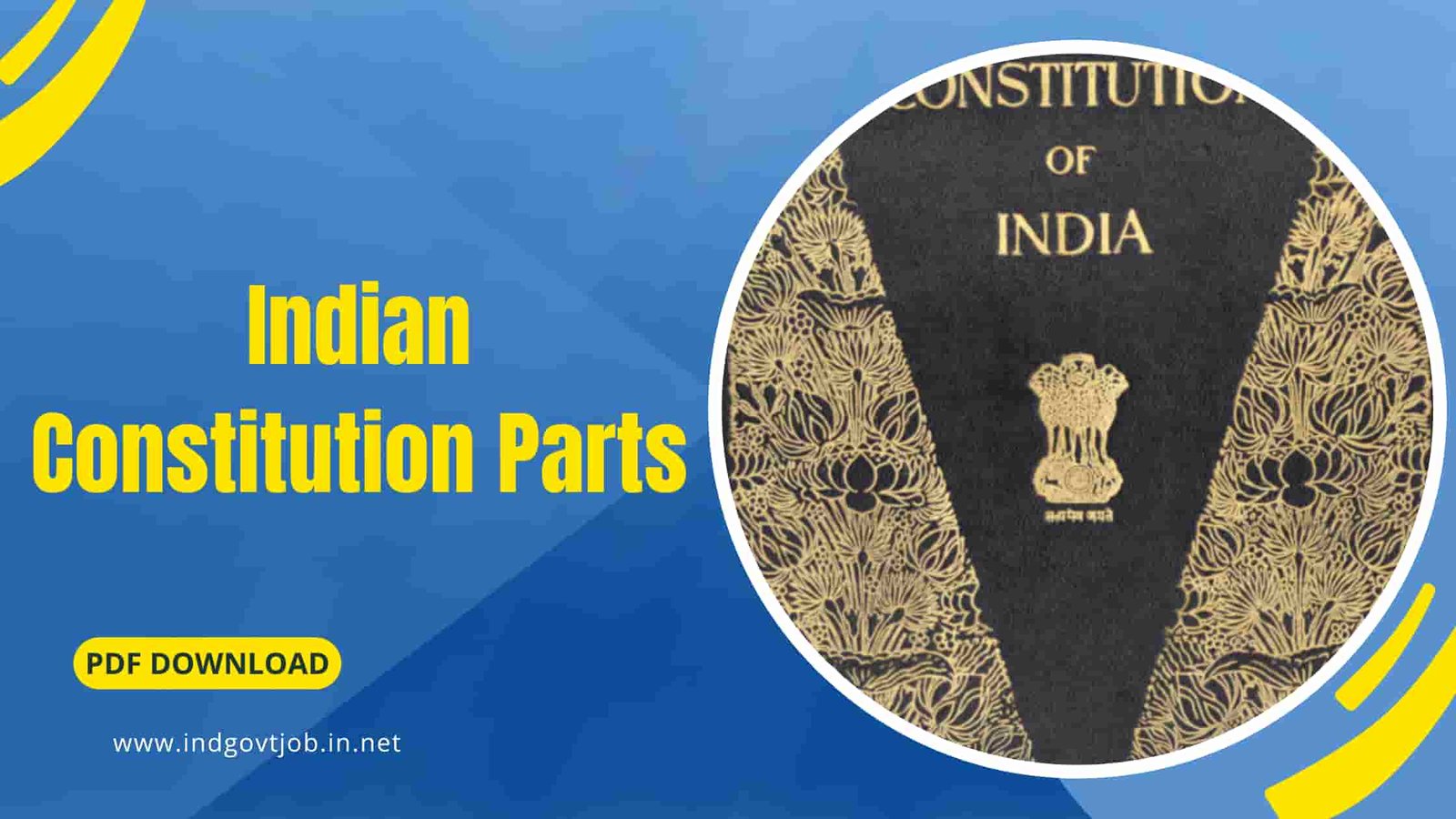Indian Constitution Parts
By IndgovtjobJanuary 07, 2023
By IndgovtjobJanuary 07, 2023

The constitution of India had a total of 22 parts before amendments, but after amendments, it has a total of 25 parts now. These parts are divided into articles, which are further divided into clauses.
The parts of the Indian constitution cover a wide range of topics, including the distribution of powers between the national government and states, the rights and duties of citizens, and the structure and power of various branches of government.
Some of the more well-known parts of the constitution include Part-III, which contains the fundamental rights guaranteed to all citizens of India, and Part IV, which deals with directive principles of state policy, which outline the goals and values that the government should strive to uphold.
If you’re preparing for the Government exam such as SSC CGL, SSC CHSL, Bank PO, State Government exam etc, then Indian constitution parts are important topics.
You can download the Indian constitution parts PDF from here.

Here’s the complete list of 25 parts of Indian constitution:
| Parts and Subject | Articles |
|---|---|
| Part I — The Union and its Territories | 1 – 4 |
| Part II — Citizenship | 5 – 11 |
| Part III — Fundamental Rights | 12 – 35 |
| Part IV — Directive Principles of State Policy | 36 – 51 |
| Part IV A — Fundamental Duties | 51A |
| Part V — The Union | 52 – 151 |
| Part VI — The States | 152 – 237 |
| Part VII — The States in Part B of First Schedule | 238 (Repealed) |
| Part VIII — The Union Territories | 239 – 242 |
| Part IX — The Panchayats | 243 – 243O |
| Part IXA — The Municipalities | 243 – 243G |
| Part IXB — The Co-operative Societies | 243ZH – 243ZT |
| Part X — The scheduled and Tribal Areas | 244 – 244A |
| Part XI — Relation Between the Union and the States | 245 – 263 |
| Part XII — Finance, property, contracts and suits | 264 – 300A |
| Part XIII — Trade, Commerce and Intercourse within the territory of India | 301 – 307 |
| Part XIV — Services Under the Union and the States | 308 – 323 |
| Part XIVA — Tribunals | 323A – 323B |
| Part XV — Elections | 324 - 329A |
| Part XVI — Special provisions relating to certain classes | 330 – 342 |
| Part XVII — Official Language | 343 – 351 |
| Part XVIII — Emergency Provisions | 352 – 360 |
| Part XIX — Miscellaneous | 361 – 367 |
| Part XX — Amendment of the Indian Constitution | 368 |
| Part XXI — Temporary, Transitional and Special Provisions | 369 – 392 |
| Part XXII — Short Title, Commencement, Authoritative Text in Hindi and Repeals | 393 – 395 |
There are 25 parts in the Indian Constitution.
The main parts of the Indian Constitution are:
The preamble of the Indian Constitution is a short introduction that states the basic principles and objectives of the Constitution. It declares that the Constitution is "the supreme law of the land" and that it was adopted by the Constituent Assembly on 26 November 1949. The preamble also states that the Constitution aims to establish a "sovereign socialist secular democratic republic" and to secure to all citizens "justice, social, economic and political; liberty of thought, expression, belief, faith and worship; equality of status and of opportunity."
The fundamental rights of Indian citizens are the basic human rights guaranteed to every citizen of India by the Constitution. These rights include the right to equality, the right to freedom of speech and expression, the right to freedom of religion, the right to life and liberty, and the right to education, among others. These rights are protected by the courts and cannot be taken away by the government.
The fundamental duties of Indian citizens are the duties that every citizen of India is expected to fulfill for the maintenance of a democratic and harmonious society. These duties include the duty to respect the national flag and the national anthem, the duty to respect the Constitution and the laws of the country, the duty to defend the country and render national service when called upon to do so, and the duty to protect the natural environment, among others.

Also Read:
SHARE IT